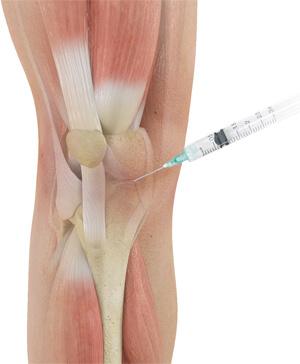
Corticosteroid injections were introduced in the 1940s and they soon became popular in the treatment of sports-related injuries because they provide prompt pain relief. When clinical trials were introduced in the 1950s they shed doubt on the long-term effect of cortisone injections. While patients enjoyed the dramatic short-term relief of pain, the injury often relapsed within six months. However, these findings did not dampen enthusiasm for cortisone injections since too many people they seemed a better alternative to rest and physical therapy. However, a major review article published in The Lancet in 2010 intensifies the doubts about the efficacy of cortisone injections.
The Study Method
- The Lancet study was a meta-analysis, a scientific way of pooling data from many small studies to increase the study size making the findings more powerful than individual small studies.
- Forty-one high-quality randomized controlled clinical trials were pooled, creating a database of 2672 subjects.
Results
- Compared to other interventions, cortisone injections reduced tennis elbow pain in the short-term, but this effect was reversed at 6 and 12 months. There was a 63% risk of relapse and lower recovery rate compared to those who did not receive cortisone injections.
- In contrast, hyaluronate injections reduced pain in the short term as well as at 6 and 12 months and Prolotherapy provided confirmed relief at 6 months.
- People receiving multiple steroid injections are especially at high risk for worsening damage. An average of 4 injections results in a 57% worse outcome when compared to one injection.
- The authors conclude that for tennis elbow, cortisone injections seem counterproductive.
Why is this study important?
Cortisone injections have become a standard of practice and are frequently requested by patients because they do provide rapid relief of pain. However, patients, particular athletes, should consider the long-term effects of cortisone injections as they may decrease the tendons regenerative potential.
- For many years it was believed that tendon over-use injuries were caused by inflammation. It was logical to use cortisone as a treatment because it is an anti-inflammatory medication. However, numerous studies now show convincingly that chemical markers of inflammation cannot be found in these overuse injuries. We now know that fibers within the tendons fray, which indicates the injury is due to degeneration.
- It must be asked, ‘Why do cortisone injections appear to work in the short term?’ The answer is they seem to have an effect on the neural receptors that produce the pain signal. However, they have not been shown to heal structural defects, instead, they may actually impede tissue healing.
- While there will always be a desire for a “quick fix,” the author of the Lancet study advises that athletes with tennis elbow think carefully about the wisdom of cortisone shots. New, emerging cellular treatments, such as platelet-rich plasma (PRP), show great promise in healing tendon pain and injury.
Coombs, B., Bisset, L. & Vicenzino, B. (2010). Efficacy and safety of corticosteroid injections and other injections for management of tendinopathy: A systematic review of randomized controlled trials. The Lancet. 376(9754):1751-1767.
Reynolds, G. (2010). Phys Ed: Do cortisone shots actually make things worse? http://well.blogs.nytimes.com/2010/10/27/do-cortisone-shots-actually-make-things-worse/?_r=0
